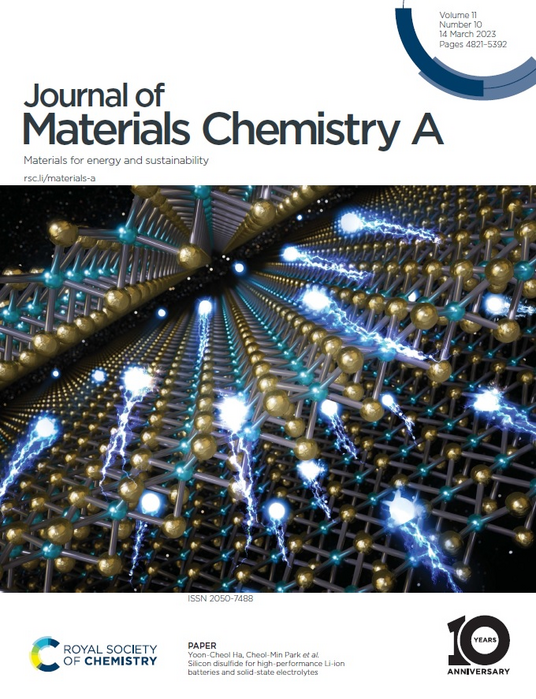A research group headed by Dr. Ha Yoon-Cheol, a Principal Researcher of Next Generation Battery Research Center at the Korea Electrotechnology Research Institute (KERI) and Dr. Cheol-Min Park, a Professor at the School of Materials Science and Engineering at Kumoh National Institute of Technology (KIT), has built an economical production technology for silicon disulfide (SiS2) for solid-state electrolytes (argyrodite-type) so that it can expedite the commercialization of all-solid-state batteries (ASSBs).
 Studies on optimal SiS2 production technology published as a cover article in Journal of Materials Chemistry A. Image Credit: Korea Electrotechnology Research Institute
Studies on optimal SiS2 production technology published as a cover article in Journal of Materials Chemistry A. Image Credit: Korea Electrotechnology Research Institute
ASSBs could replace the liquid-state electrolytes that exchange ions between the anode and cathode by using a solid that is less liable to explosion or fire. However, there are still several difficulties that need to be addressed before commercialization, including challenges in processing and mass production, expensive material charges, and more. Several research teams worldwide are working hard to handle these difficulties, and KERI has also proved successful in this many times.
In this study, the team of Dr. Ha offered an eye to silicon disulfide. It is extensively recognized in academia that adding silicon disulfide to solid-state electrolytes for ASSBs aids in increasing moisture stability and ionic conductivity.
Still, the synthesis of silicon disulfide from sulfur and silicon needs a high reaction temperature, resulting in surges in the vapor pressure of sulfur, making the silicon disulfide production process specifically complicated. As a result, silicon disulfide is a very costly material, currently costing approximately KRW 1.7 million/20 gm.
For the ideal production of silicon disulphide, KERI designed a process technology and set the stage for its application in solid-state electrolytes for ASSBs. The researchers were efficient in demonstrating synthesis conditions by enhancing the arrangement of sulfur and silicon powders and making an ideally sealed environment to endure the vapor pressure of sulfur at 800 degrees of reaction temperature.
The resulting product’s quality was comparable to the commercially accessible products. The team created solid-state electrolytes with their silicon disulfide and identified that it had more than double the moisture stability and ionic conductivity. The enhanced process will aid in easing production and decreasing production prices.
Many researchers at home and abroad have struggled to address the elevated vapor pressure of sulfur, which required using expensive raw materials or introducing special processes. What we have achieved will contribute to producing silicon disulfide for solid-state electrolytes cheaper and easier.
Dr Ha Yoon-Cheol, Principal Researcher, Next Generation Battery Research Center, Korea Electrotechnology Research Institute
The researchers also employed the new silicon disulfide as an anode active material for liquid electrolyte-based lithium-ion batteries and found the recovery and destruction of layered structures while discharging and charging for the first time across the globe. The outcomes of the team from their silicon disulfide study were published as the cover article in Journal of Materials Chemistry A, a pioneering journal in the field of fuel and energy research.
For this technology, KERI is getting a patent application ready. The institute is expecting keen attention from companies linked to ASSBs, for instance, material production companies for electrode/membrane equipment companies, solid-state electrolytes, cell assembly companies, etc., using which it plans to continue the commercialization and up-scaling of the silicon disulfide production method.
Journal Reference:
Nam, K.-H., et al. (2023). Silicon disulfide for high-performance Li-ion batteries and solid-state electrolytes. Journal of Materials Chemistry A. doi.org/10.1039/d2ta08877k.